A discussion with DNEG Compositor Lukas Löffler, VES Student Award Winner
We were delighted last week to see DNEG Compositor Lukas Löffler receive a VES Award for ‘Outstanding Visual Effects in a Student Project’, for the exceptional work he and his team from Germany’s Filmakademie Baden-Württemberg delivered on Murad Abu Eisheh’s student short-film, A Calling. From the Desert. To the Sea.
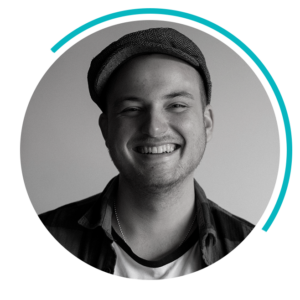 Lukas, who served as Compositing Lead on the project, accepted the award alongside Mario Bertsch (VFX Supervisor), Lennard Fricke (VFX Producer) Max Pollman (VFX Producer) and Till Sander-Titgemeyer (Creature Lead). Following their acceptance speech, their award-winning VFX Breakdown, ‘The Ghoul Project’ played for the ceremony attendees, which included industry icons such as James Cameron, Jon Landau, Joe Letteri, and Gale Anne Hurd.
Lukas, who served as Compositing Lead on the project, accepted the award alongside Mario Bertsch (VFX Supervisor), Lennard Fricke (VFX Producer) Max Pollman (VFX Producer) and Till Sander-Titgemeyer (Creature Lead). Following their acceptance speech, their award-winning VFX Breakdown, ‘The Ghoul Project’ played for the ceremony attendees, which included industry icons such as James Cameron, Jon Landau, Joe Letteri, and Gale Anne Hurd.
We couldn’t be prouder to see our talented DNEG team member receive this special recognition as a VES Student Award winner, and so we caught up with him to learn more about the project and his role on it!
Hi Lukas! Congratulations on your VES Award win. Please can you tell us a bit about how you got started in this industry, and on this project?
I studied visual effects at Animationsinstitut which is a part of Filmakademie Baden Württemberg in Germany. We work on a lot of self-initiated projects throughout the 5 year program, which ultimately culminates with our diploma project.
Actually, we assembled quite quickly to form a core team for our final and biggest film. We approached our final project with one simple goal: to create a creature from scratch. We reached out to director Murad Abu Eisheh — we had worked with him before — and pitched our vision and ideas. Quickly our VFX team grew to about 40 people! It was amazing how many students and also alumni wanted to be a part of it.
Our school supported us with our office, licences, hardware and renderfarm among other things, after our producers presented our production plan. We are very lucky to have had such amazing resources at our disposal at Animationsinstitut. We basically worked like a small VFX company within the school, and that was great preparation for the industry.
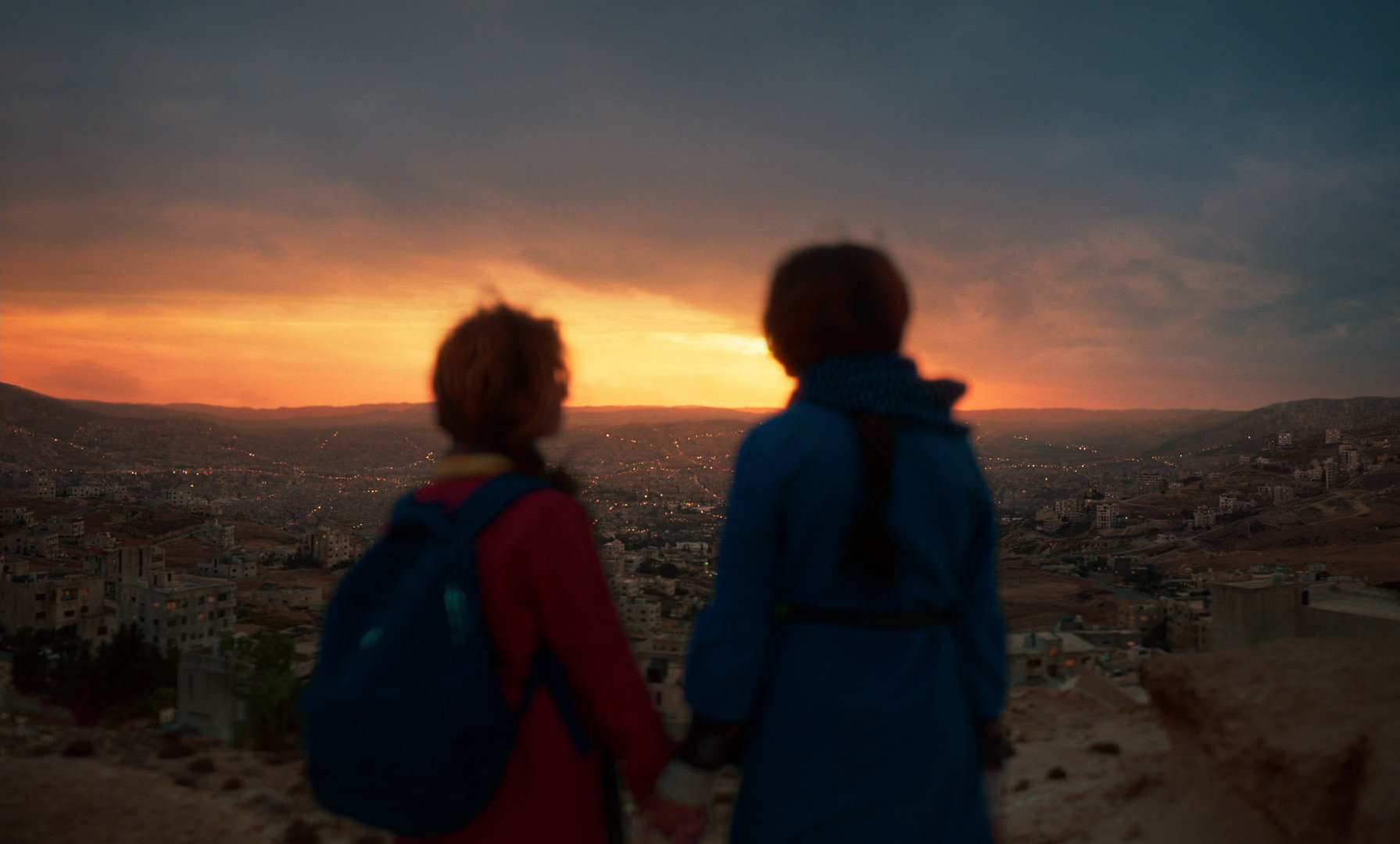
Could you tell us a little about ‘The Ghoul Project’ / A Calling. From the Desert. To the Sea?
‘The Ghoul Project’ is our VFX work and contribution to the short-film A Calling. From the Desert. To the Sea directed by Murad Abu Eisheh. It’s a story about two sisters living in the desert, trying to escape their oppressive father. The younger daughter dreams of her father in the form of a mystical, ghoulish monster.
We shot the short in 5 days in the Jordanian Desert ‘Al-Azraq’ and we had about a year of post production time.
What was your role on ‘The Ghoul Project’ / A Calling. From the Desert. To the Sea, and what responsibilities did that involve?
Besides editorial work and matchmoving, I was the Compositing Lead on this project. I worked closely together with our Comp team and overlooked the whole compositing, lighting and matte painting process. We had tasks like extending the desert set with a mountain range or a big city in the background, some retouches and of course the creature integration.
I also had the great opportunity to assist our VFX Supervisor on-set and did a lot of on-set photography for reference and matte paintings. Additionally, I supervised an asset-shoot and did a lot of hands-on compositing as well.
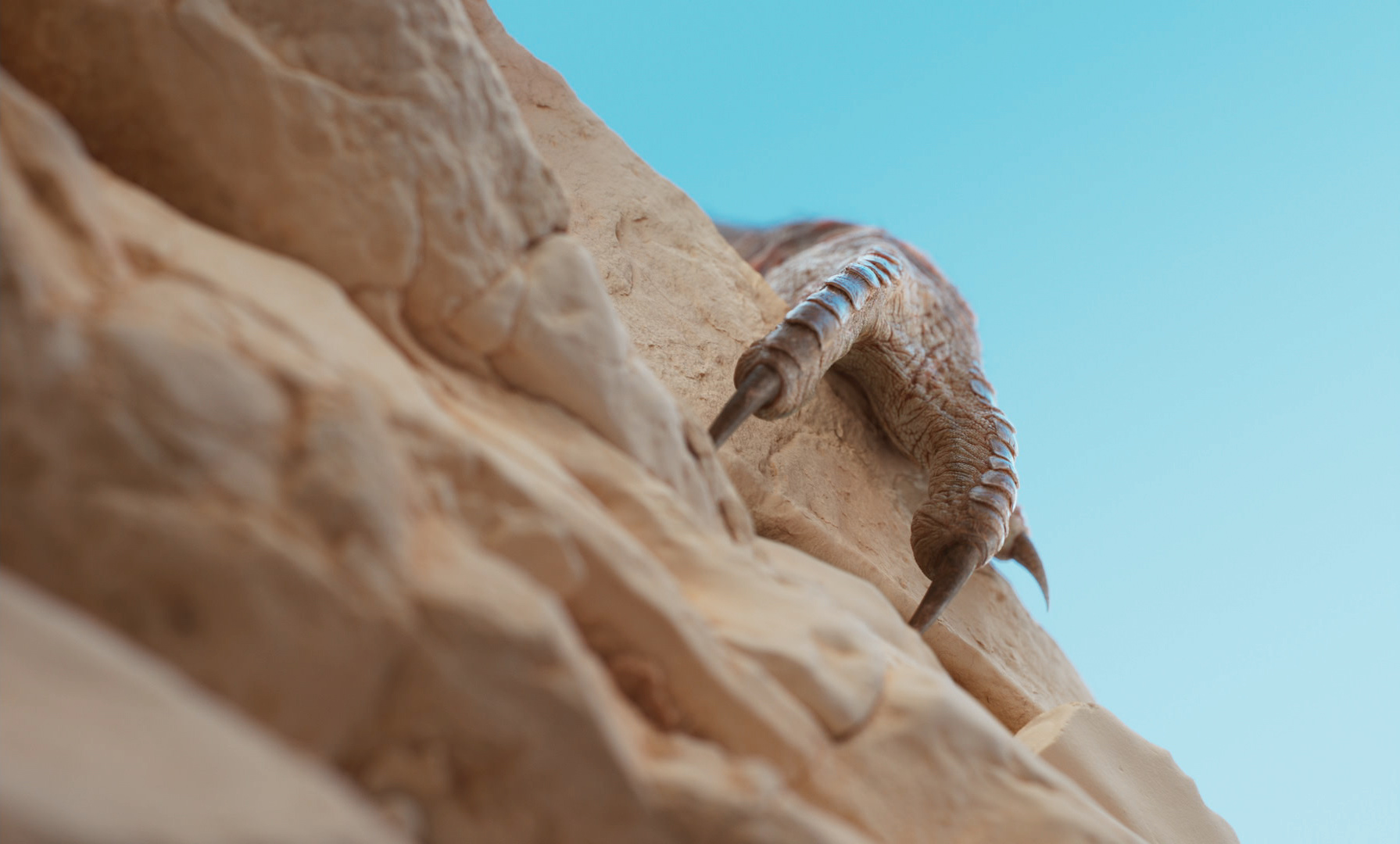
What was the biggest challenge you and the team faced and how did you overcome it?
In my opinion that would be the creature lookdev and integration. Our school’s diploma program required that we assemble the pipeline for the project, so we needed to figure out a creature pipeline from scratch, while also reacting to all the usual changes that emerge during a VFX project: changing creature designs, new edits, new and omitted shots — everything to support the story.
Regarding the lookdev, it was tricky to make the creature look interesting within the dry desert landscape, so we tested a lot with lighting wedges and eventually shifted a lot of the final lookdev process into comp for faster iterations.
On set we photo-scanned the location, a valley our creature was moving in, and scanned the larger surrounding with a drone. In post we used renders of the scans for a more accurate shadow and contact representation.
What was your favourite part of working on this project, and why?
My favourite part was certainly the shoot. Being able to walk with an incredible team through the Jordanian desert and capture images there, that was truly amazing. I still find some sand in my bags every now and then! 😀
As a special wish of mine, we actually did an additional asset shoot in one of our school’s studios, during which we 3D-printed the creature’s skull and filmed some industrial slime dripping from its teeth and mouth. This tiny touch added even more realism to our FX team’s great work, and it was a lot of fun to comp-in later.
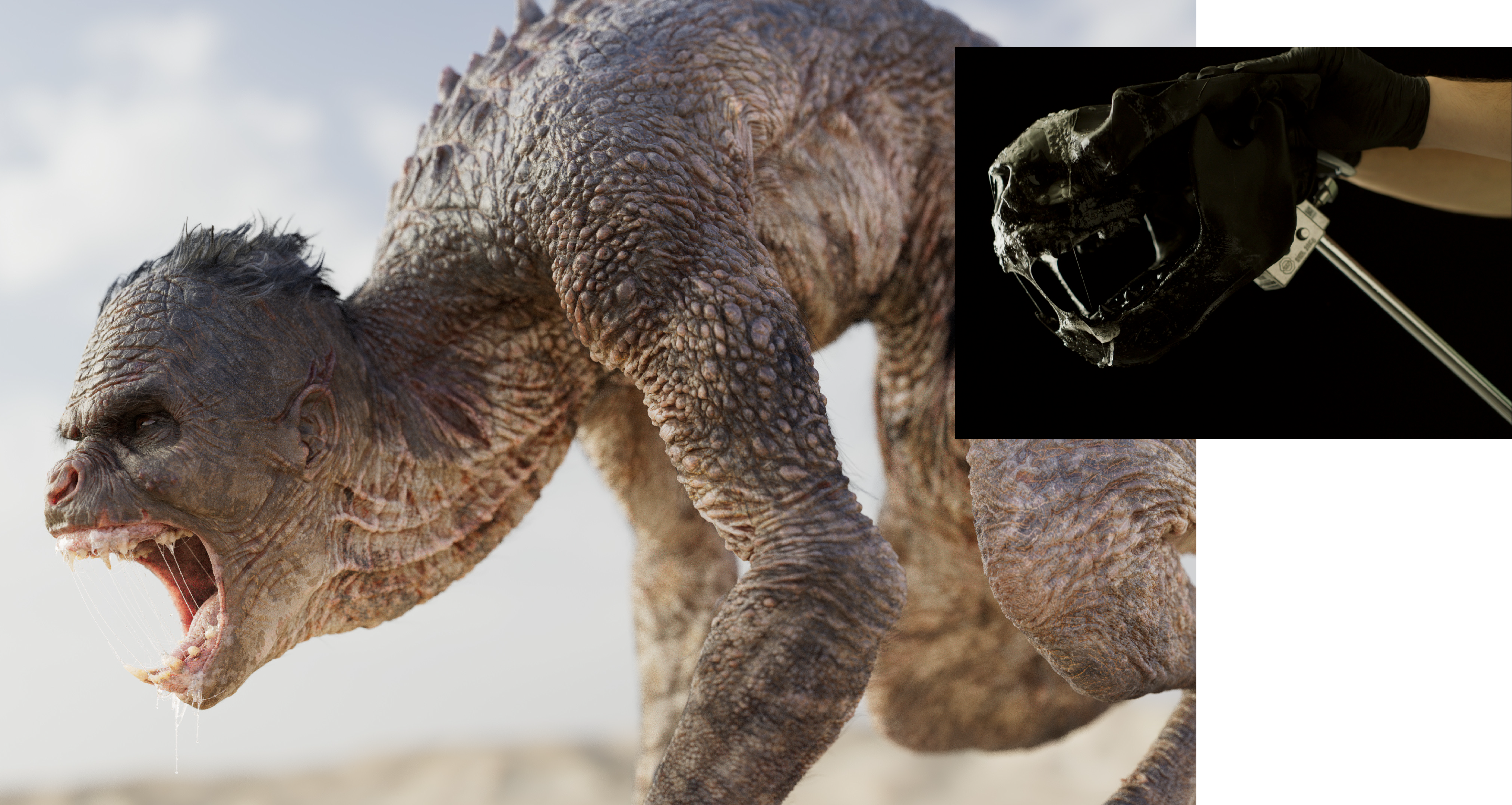
How does it feel to receive a VES Award for your work?
Incredible. After three years of hard work, I was super happy to step on-stage next to the amazing individuals that I had the honour to work with. But as always in VFX, this was a massive group effort, so I would like to thank all of the outstanding artists that dedicated their free time to this project! And a special shout-out to Pascal Schober (TD) and Lukas Kapp (Rigging TD) for their amazing work as well.
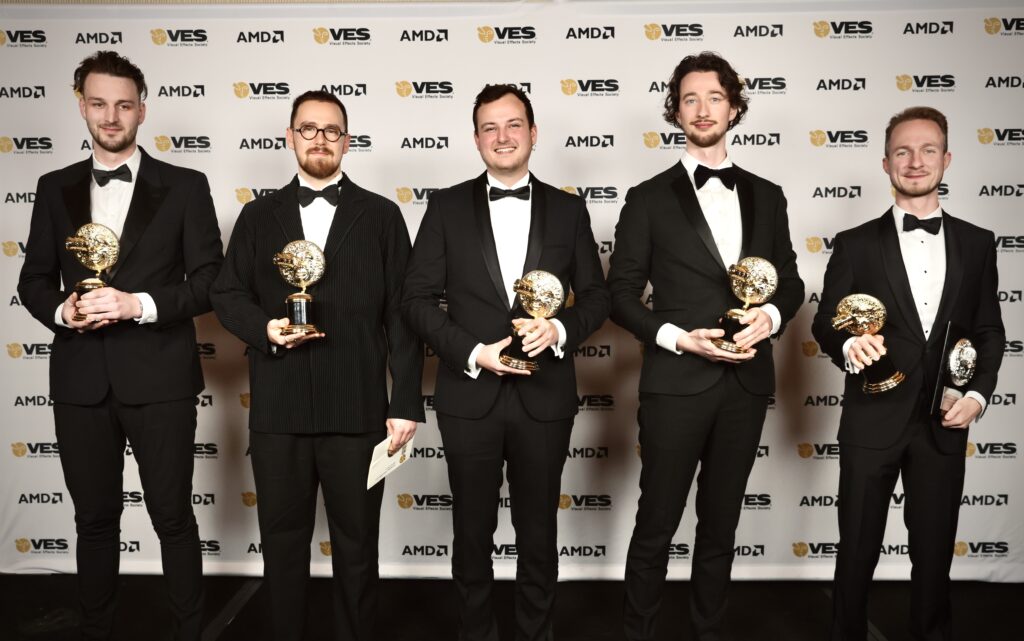
Congratulations again, Lukas and team!
Enjoy the VFX Breakdown ‘The Ghoul Project’ now, then find out more about the project in Animation Magazine.